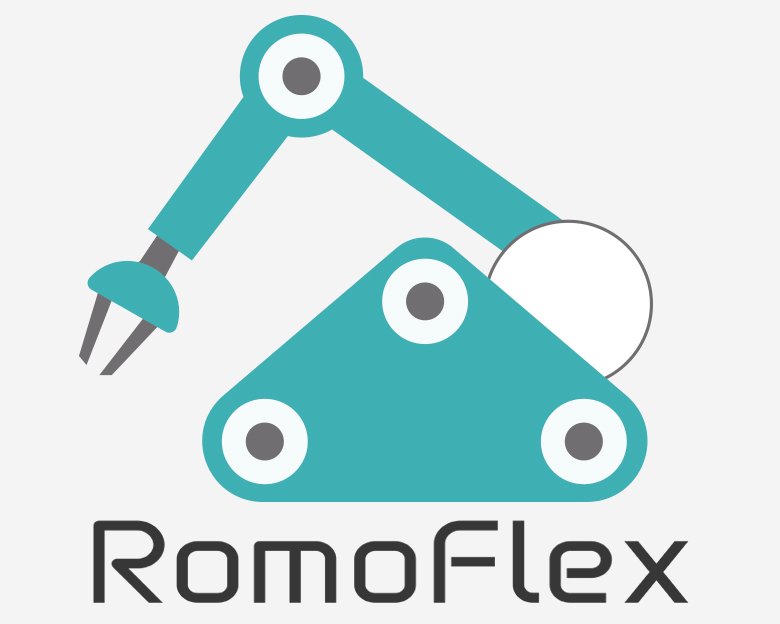RoMoFLEX consortium is led by DGH as coordinator, and is made up of the companies ELYMCO, SOFTCRIST, and SYNERSIGHT, under the framework of the Innterconecta 2018 Programme. TECNALIA participates as a collaborating entity.
RoMoFLEX has mainly contributed to the social challenge R7: Digital economy and society. RoMoFLEX shall contribute to the ICT sector in Andalusia and Castilla y León, by strengthening and diversifying ELIMCO, Softcrits, DGH and Synersight’s technological portfolio. Innovative robotics, artificial vision systems and 4.0 connectivity in highly organised production lines are undoubtedly a set of solutions for future industries.
RoMoFLEX is designed as a modular product with a market focus.
The popularisation of autonomous automated systems, with flexible and collaborative robotics, is driving the demand for new products from companies, which is opening up new markets.
En abril de 2021 RoMoFLEX finalizó con éxito, desarrollando un prototipo funcional de coste contenido que responde a las necesidades de manipulación presentes en un entorno de fabricación Lean (ELIMCO) donde las capacidades del PMR pueden ser explotadas al máximo, tanto desde el punto de vista de la conectividad (Softcrits), como desde el punto de vista de producto (plataforma móvil – Synersight y robot manipulador – DGH).
Key innovations
The Robotic Mobile Platform, which is the project’s subject, features a degree of autonomy (partial and controlled) that represents a technological leap compared to the consortium companies’ technologies. The RMP as a whole combines the capabilities of the different project partners and the subcontracted collaborating entity to offer the following features:
- It has a high perception capacity (by vision and by contact) concerning its environment in order to adapt its internal model.
- It can be programmed and reconfigured easily by non-experts to quickly adapt to new product variants to be produced.
- It can potentially work in interaction with people.
- It can be integrated into production lines, connected to management systems or enterprise resource planning systems (hereafter ERPs), and 4.0 connectivity like any other production environment.
- The RMP concept developed in RoMoFLEX is not dependent on either the developed mobile platform or the used handling robot, making it flexible to use other platforms and commercial robots.
- The RMP’s autonomous navigation detects obstacles within its operating area and responds to collision avoidance in accordance with safety regulations.
- The RMP solution developed is more economical than current RMP combinations from German or American companies.
- It has IoT connectivity systems to measure system KPIs and optimise the tasks programmed by the ERP.
Cross-sector collaboration
The FEDER-Innterconecta programme is geared towards experimental development in cooperation between companies to achieve technological innovation that can be applied and has an impact on the production sector. Romoflex is an example of a cooperation and collaboration strategy between the participating partners that matches the approach and lines of action that have been promoted in recent years by both regional and European authorities as fundamental pillars to promote competitiveness: science-technology-innovation based on business collaboration (and Technology Centres).
The RoMoFLEX technology consortium has aimed to:
- Bring together the existing synergies between different partners’ capabilities, to be used to generate an innovative prototype of a value-added RMP.
- Contribute significantly to strengthening participating industries and creating businesses in emerging areas through the transfer of the knowledge generated.
These joint actions make it possible to further consolidate the bases of cooperation, as well as to establish alliances and external connectivity links between the industrial fabric of Castilla y León and Andalusia.
Partners

Collaborating entity

Budget and funding
The ROMOFLEX project has a total budget of €1.2 million and will be executed in Andalusia and Castilla y León, and is due to be completed in 2021. As part of the FEDER Innterconecta 2018 initiative, the project is subsidised by the CDTI and co-financed by the Ministry of Science, Innovation and Universities and the European Regional Development Fund (ERDF), as part of Spain’s Multi-regional Operational Programme 2014-2020, with the aim of boosting research, technological development and innovation.
This project is co-financed by the European Union

